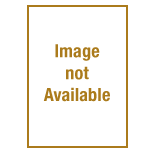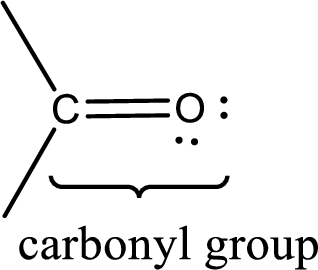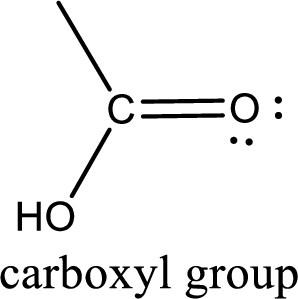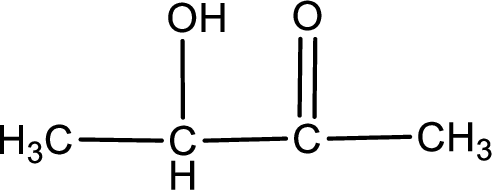
Concept explainers
Interpretation:
The compounds in which carboxyl group is present has to be chosen from the given options.
Concept Introduction:
Carbonyl groups are the one which contain a double bond between carbon and oxygen atom.

If a hydroxyl group is attached to a carbonyl group means it is known as carboxyl group. This can be represented as shown below,

Answer to Problem 16.1EP
Compounds that contain carboxyl groups are option (a) and option (d).
Explanation of Solution
Reason for correct option:
Carboxylic acid is a class of organic compound that contain carbonyl group in it. The functional group of carboxylic acid is the carbonyl group attached to a hydroxyl group.

This group is also known as carboxyl group. Among the given compounds in the problem statement, there are only two compounds that contain the carboxyl group. They are shown below,

Hence, the correct options are option (a) and option (d).
Reason for incorrect option:
Compound given in option (b) is,

This does not contain the carboxyl group. This is a carboxylic acid derivative namely, ester. Hence, option (b) is an incorrect one.
Compound given in option (c) is,

This does not contain the carboxyl group. This is a carbonyl compound. Hence, option (c) is an incorrect one.
Therefore, option (b), and option (c) are incorrect one.
The correct option among the given options is identified as option (a) and option (d).
Want to see more full solutions like this?
Chapter 16 Solutions
CHM 104/201 <C>
- Which of the following classes of compounds has a carbonyl group? (Sec. 19.5) (a) aldehyde (b) amide (c) ester (d) ketone (e) all of the abovearrow_forwardWhich of the following functional groups contains a carbonyl group? a) ketone b) ester c) carboxylic acid d) amide e) all of the abovearrow_forwardwhich of the following is a tert-butyl group?arrow_forward
 General, Organic, and Biological ChemistryChemistryISBN:9781285853918Author:H. Stephen StokerPublisher:Cengage Learning
General, Organic, and Biological ChemistryChemistryISBN:9781285853918Author:H. Stephen StokerPublisher:Cengage Learning Organic And Biological ChemistryChemistryISBN:9781305081079Author:STOKER, H. Stephen (howard Stephen)Publisher:Cengage Learning,
Organic And Biological ChemistryChemistryISBN:9781305081079Author:STOKER, H. Stephen (howard Stephen)Publisher:Cengage Learning, Chemistry for Today: General, Organic, and Bioche...ChemistryISBN:9781305960060Author:Spencer L. Seager, Michael R. Slabaugh, Maren S. HansenPublisher:Cengage Learning
Chemistry for Today: General, Organic, and Bioche...ChemistryISBN:9781305960060Author:Spencer L. Seager, Michael R. Slabaugh, Maren S. HansenPublisher:Cengage Learning


